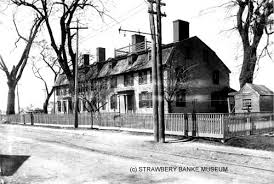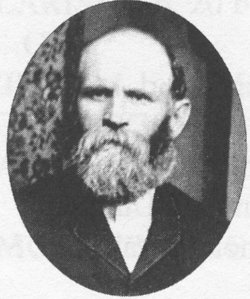Nathaniel Meserve: from carpenter to colonel
Some time ago, a member of the Messervey Heritage Facebook group provided information on Colonel Nathaniel Meserve, part of the American entourage of Jersey emigrants. I always meant to do a post on him, and today noted that it was two years ago that Marilyn Griffin Turner provided the post!
Nathaniel
Meserve was born in Newington, New Hampshire about 1705, the son of Clement
Meserve and Elizabeth Jones. Nathaniel’s
grandparents were original New Hampshire settlers from Jersey, Channel Islands. Following in his father’s footsteps,
Nathaniel became a carpenter and joiner and eventually a ship’s carpenter
(shipwright). On 16 December 1725, Nathaniel
married his first wife Jane (Sarah) Libby [1] and
they had ten children. His wife died in
1747 and he married a second time to Mary Jackson a widow and daughter of Judge
Jotham Odiorne.
The story
goes that Nathaniel enjoyed great success as a shipbuilder and became very
wealthy. He purchased land in Portsmouth
where he built a rather fine Georgian style home .
On the same land he built a large shipyard
operation. However, he lived a quiet life until 1745, when he was about 40
years of age, and became a Lt. Colonel of the New Hampshire Regiment. He excelled in his participation in the first Siege of Louisbourg and was well-respected as a result. He was particularly singled out for his
innovation of wooden sledges for carrying ship’s cannon.
Upon return
to Portsmouth, Nathaniel was asked to build a ship of war that would carry
forty-four guns. Called the America, it was considered one of the
best frigates in the British Navy. The name was later changed to Boston.
 |
| Model of the America frigate |
When the Seven Years War[2]
officially launched in 1756, Meserve was called into active service again, as
commander of 700 in the New Hampshire regiment.
He spent time in Halifax but no active service occurred and he returned
home in November of 1757. However, by
1758 he was sent back to Halifax, this time in command of 108 carpenters and on
to the second siege of Louisbourg at the beginning of June. This is where the story ends, as on 28 June
1758 Nathaniel succumbed to smallpox, along with his son Nathaniel. All but sixteen of his carpenters were ill,
according to General Amherst’s notes, who added in a great example of
understatement that “This is particularly unlucky at this time.”[3]
[1]
Many sources refer
to Jane Libby –however, there is no record of a Jane Libby marrying Nathaniel and an excerpt from marriage records shows Nathaniel marrying Sarah Libby (Leby) on that specific date. It is a possibility that her name was Sarah
Jane and Jane was what
she was commonly called. Her gravestone refers to her as Jane. Reference: Marriages by Rev. William
Allen. Excerpt from p. 353, Vital Records from the NEHGS Register, Vol. 65
(1911). Accessed at
Americanancestors.org.
[3]
Tuttle, Charles W. New England
Historical and Genealogical Register. Vol. 23, 1869. p.201-203




Interesting post Peggy! Thanks for the info.
ReplyDeleteThank you!
ReplyDelete